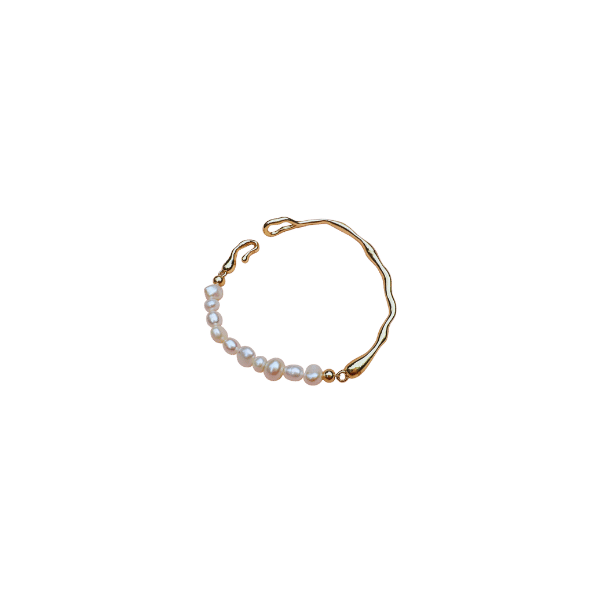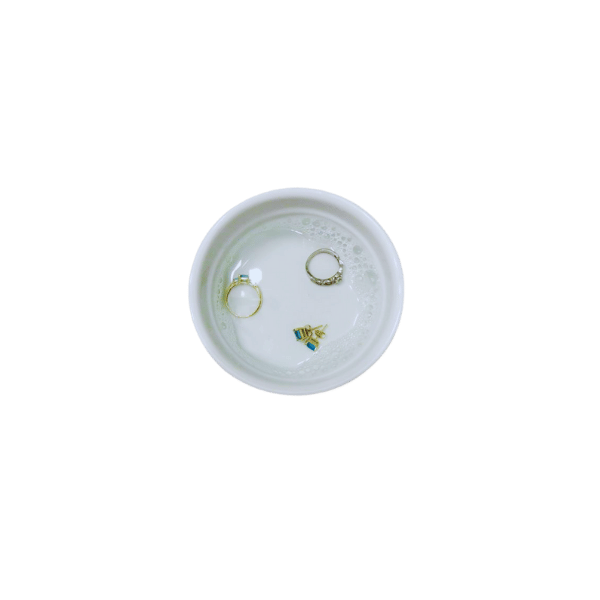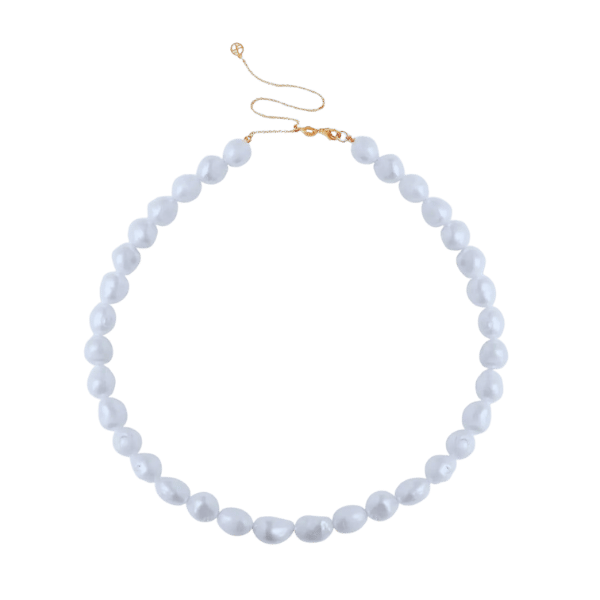Few jewelry pieces can match a pearl pendant when timeless beauty and versatile style are in question. When you want a sophisticated accessory for weddings and formal occasions, a meaningful gift for a loved one, or a delicate touch to complement an everyday outfit, pearl pendants can give you the whole charm and adaptability. This guide will shed light on how to find the right pearl pendant for any occasion, touching on design, type of pearl, and preference. Join us as we discover the key to choosing a pendant that will pair well with your wardrobe and be a treasured piece in any jewelry collection.
What Makes a Pearl Pendant Unique?

Pearl pendants have an allure, with timeless elegance and a natural origin. Each pearl is formed organically within mollusks, rendering every pendant unique. Their understated dignity allows for an easygoing approach with diverse styles, from casual to formal attire. Further, the different drops of pearls, such as Akoya, freshwater, and Tahitian, serve as more options with varying sizes, colors, and luster to suit every choice. This versatility and rarity make the pearl pendant a special, revered jewelry product.
The Appeal of Freshwater Pearls
Freshwater pearls are considered more affordable, versatile, and naturally beautiful. Unlike other pearls, they form in freshwater and come in all shapes, sizes, and colors. Their dull luster and rustic appeal have made these pearls the bridal choice of contemporary and traditional jewelers. Also called freshwater pearls, they are more abundant and durable and are priced very economically to provide those desiring quality pearl-fitted accessories.
Understanding the Different Types of Pearl
|
Type |
Origin |
Size (mm) |
Colors |
Shape |
Rarity |
|---|---|---|---|---|---|
|
Akoya |
Japan, China |
2-10 |
White, Cream |
Round |
Common |
|
Tahitian |
Polynesia |
7-18 |
Black, Green |
Round, Baroque |
Rare |
|
South Sea |
Australia, Philippines |
9-20 |
White, Gold |
Round, Baroque |
Very Rare |
|
Freshwater |
China, USA |
2-15 |
Pastels, White |
Varied |
Common |
|
Keshi |
Byproduct |
Small |
Varied |
Irregular |
Rare |
|
Mabe |
Various |
Medium |
White, Pastels |
Flat |
Rare |
|
Baroque |
Various |
Varied |
Varied |
Irregular |
Common |
|
Biwa |
Japan |
Varied |
Metallic, Pastels |
Irregular |
Rare |
|
Coin |
Various |
Varied |
White, Pastels |
Flat |
Common |
The Role of Cultured Pearls in Jewelry
Cultured pearls are essential in jewelry for their accessibility, versatility, and beauty. Unlike natural pearls, which are mostly scarce and exorbitantly priced, cultured pearls, including the golden south, are cultivated through controlled techniques to make high-class pearls considerably more available. They come in different shapes, sizes, and colors, including the black pearl variety, so designers may sometimes cook up an array of unusual pieces. These pearls are known for their luster and elegance and have thus often been the candidate for the construction of timeless jewelry like necklaces, earrings, bangles, and rings, all the while remaining a modern designer choice that is quite affordable and sustainable.
How to Choose the Right Pearl Pendant Necklace

Factors to Consider When Selecting the Perfect Pearl
- Pearl Type: Select a pearl based on your preferred type, choosing between freshwater, Akoya, Tahitian, or South Sea pearls. They vary in size, luster, and color with distinctive characteristics.
- Luster: The best-quality pearls have a very bright and reflective luster. The beauty of a pearl depends mainly on the quality of its luster.
- Size: Choose a size that suits your style and occasion. Big pearls make loud statements, while little ones are meant to be quietly elegant.
- Color: Consider a color that flatters your skin tone and matches your wardrobe. Classic options are white or pink, whereas a more daring choice would be dark hues like black or green.
- Shape: Round, oval, drop, or baroque shapes can be considered. Make up your mind based on your choice or the design of the necklace.
- Quality and Grading: Assess quality and grading, including the thickness of the nacre and surface quality, to ensure lasting beauty.
- Chain and Setting: Consider the metal used for the necklace chain and pearl setting, such as gold, silver, or platinum, as these will contribute to the style and life span.
Finding the Right 14k Gold or Sterling Silver Setting
Choosing a setting material is very important because it influences your jewelry's aesthetically pleasing nature and sturdiness. When deciding between 14k gold and sterling silver, consider the budget, maintenance, and appearance.
14k Gold is a widely favored metal with an audacious price-quality ratio. Such metal consists of 58.3% pure gold and 41.7% alloy metals to ensure greater durability while preserving that beautiful luster of gold. Yellow, white, and rose-gold versions differ in pairing with pearls or gemstones, giving various designs a great deal of versatility. Also, gold does not tarnish, which further minimizes maintenance over time.
Sterling silver, an alloy composed of 92.5% silver and 7.5% of various other metals, mainly copper, is the cheaper option. Its bright, whitish color is said to be the perfect complement to any gemstone and combines well to form a modern, minimalist design. Sterling silver and polishing are tantamount to bonding; when left alone, the silver pieces tarnish fast, and they will need cleaning most of the time to keep their tender appearance. Rhodium plating is your best alternative for sterling silver, as the plating offers a protective package that keeps it shiny and provides some resistance against tarnishing.
Ultimately, your selection should consider how you will wear the jewelry daily, your design preference, and your capacity to maintain its good condition. The best craftsmanship, paired with either of these, can result in something really beautiful and professional.
Choosing Between White Pearls and Colored Gemstones
|
Parameter |
White Pearls |
Colored Gemstones |
|---|---|---|
|
Symbolism |
Purity, Elegance |
Vibrancy, Uniqueness |
|
Color Range |
White, Cream, Rose |
Wide spectrum (e.g., blue, green, pink) |
|
Versatility |
Highly versatile |
Depends on color and style |
|
Rarity |
Common |
Some colors are rare |
|
Price |
Affordable to high |
Varies widely |
|
Occasions |
Formal, Bridal |
Casual to formal |
|
Pairing |
Easy to match |
Requires thoughtful pairing |
|
Durability |
Moderate |
Varies by gemstone |
|
Cultural Value |
High |
Depends on gemstone |
|
Customization |
Limited |
High possibilities |
Exploring Different Pearl Necklace Styles

The Elegance of a Single Pearl Pendant
A single pearl pendant is from the timeless, minimal design and versatility class. Generally, it has a single pearl hanging from a dainty chain so that the pendant stands out. These are mostly made with premium Akoya, South Sea, or Tahitian pearls that differ in luster and color: typical white, gentle pink, or dramatic black.
Latest industry updates tell that single pearl pendants continue to be favored for occasions ranging from casual to formal, thanks to their easy upgrade of glamor. They are so simple that they blend in with formal business attire just as well as an evening gown. Besides, different chain materials like gold, platinum, and sterling silver are offered for diverse preferences and budgets.
From a technical vantage point, the durability of a pendant depends considerably on the pearl type and grade, as well as the setting technique. Pearls with thick nacre and well-made chain designs are better in durability and value. Single pearl pendants allow for many possibilities of personalization, as the size, shape, and type of pearl can be adjusted to one's taste. This sophistication, combined with modern materials and customization capabilities, has ensured their place as a classic forever, stylish in both traditional and contemporary ways.
All About Pearl Strands and the Collection of Pearl Necklaces
Pearl strands are classic jewelry items with pearls strung into a unified necklace. These can be of different lengths, varying from choker, princess, matinee, to opera length, each suitable for a given contemporary occasion or attire. Pearl necklaces sometimes offer a choice of freshwater, Akoya, Tahitian, or South Sea pearls, all differing in light reflection, color, and size. Good-quality fine pearl strands are carefully matched in shape and surface texture to give a pleasing and elegant appearance. Such necklaces occupy a distinguished place in contemporary and traditional jewelry.
How 14k Gold Enhances a Classic Pearl Look
Adding 14k gold ornamentation to pearl jewelry, such as bracelets and earrings, enhances the combination's grace and durability, rendering it an elegant, timeless prospect. With 58.3% pure gold content, alloyed with other metals, 14k is a perfect blend of strength and grace, which is often acceptable for setting pearl earrings and necklaces. Its warm hue enhances the natural lustre of pearls, be they creamy whites, silver-grays, or deep-black varieties.
Moreover, 14k gold is highly resistant to tarnishing, ensuring the jewelry would remain brilliant even with minimal upkeep as time passes. Meanwhile, the setting in clasps or as accents provides a final, refined touch to the necklace's design. Industry insights suggest that gold and pearls are commonly priced together as their strength and beauty withstand the test of time and wear. Therefore, besides being pleasingly beautiful, 14k gold pearl necklaces also form jewelry practical enough for daily wear or special occasions, cementing their place as a staple in any fine jewelry collection.
Understanding the Value of Freshwater Cultured Pearls

Why Choose Freshwater Cultured Pearls?
Freshwater cultured pearls have become favored in fine jewelry owing to their terrific worth, versatility, and sustainable cultivation process. These pearls are grown in freshwater mollusks, mainly in lakes and rivers, with most being sourced from regions such as China, which leads worldwide production of pearl types. Instead of forming a thin layer of nacre over a bead nucleus, freshwater pearls are formed fully of nacre with a thick layer of nacre and thus have that lustrous surface and durability.
From an economic standpoint, this makes freshwater cultured pearls easier and less expensive, resulting in consumer-friendly prices while retaining quality. They come in numerous shapes, sizes, and colors, from the traditional white to shades of pink, lavender, and peach, making them an immensely versatile tool in jewelry design. Reports cited say that some freshwater pearls, including rare golden South ones, reach a diameter of 15mm, suggesting their comparability with some high-end saltwater pearls.
Advances in pearl farming practices have also transformed the ecological aspects of their cultivation, with such pearls here known to be eco-friendly. These pearls, which can meet ethical standards for production and processing while maintaining high quality, thus appeal to conscientious buyers who wish to do their bit for sustainability.
The Culturing Process Behind Freshwater Pearls
The actual culture of freshwater pearls starts with implanting a piece of mantle tissue into the mussel, usually without a bead nucleus. This unusual nucleation method allows nacre to be deposited naturally, so the pearls are composed almost entirely of this iridescent material. A mussel may give more than one pearl at any time, sometimes with particular species producing as many as 50 pearls per shell.
The farming of freshwater pearls must happen in a controlled and monitored environment. Water temperature, pH levels, and nutrient availability are all proactively maintained to ensure the being-ness of the mussels and pearl formation. The cultivation lasts two to seven years, depending on the desired size and quality of the pearls. During this time, however, farmers would occasionally clean and rotate the mussels to assist in even deposition of nacre and to avert deformation.
Technological advances have further improved the efficiency and consistency of pearl farming. An example is the recent introduction of tools for ultrasonic monitoring, which allows one to check on the growth and health of pearls without disturbing the mussels. Through technical advancements like these, pearl farmers can force higher yields of pearls, all the same high-quality ones, while conserving the environment.
Comparing South Sea and Freshwater Pearl Necklaces
|
Parameter |
South Sea |
Freshwater |
|---|---|---|
|
Origin |
Saltwater |
Freshwater |
|
Size |
Large (8-20mm) |
Small-Medium |
|
Shape |
Round, Oval |
Irregular, Round |
|
Luster |
Silky, Luxurious |
Soft, Dewy |
|
Colors |
White, Gold |
Pastels, Dyed |
|
Rarity |
Rare |
Common |
|
Price |
Expensive |
Affordable |
|
Durability |
Moderate |
High |
Styling Tips for Wearing a Pearl Necklace

Pairing Your Pearl Pendant with Special Occasion Outfits
- Formal Events: Wear a classic white or golden pearl pendant with your evening gown or tailored dress for a refined look. Choose minimal accessories to give the pendant all the attention.
- Cocktail Parties: Pastel or uniquely colored pearl pendants can be worn with bold-colored outfits. They impart understated charm, which balances brightly colored or printed clothes.
- Weddings: Pearls are perfect for weddings because they bring an air of elegance to any outfit. Wearing delicate pearl pendants with outfits in soft neutrals like ivory, beige, or pastel will further enhance a well-coordinated and elegant look.
- Black tie occasions: Consider opting for a statement pearl pendant, drawn from lustrous, extra-large South Sea pearls, set off against an elegant black or dark-colored gown.
How to Incorporate Pearl Jewelry into Everyday Wear
Pearl jewelry has evolved to meld with modern, day-to-day fashion with versatility and timeless grace, especially earrings and bracelets. Lately, it has been trending to wear pearls with casual clothes and work outfits to balance the look and lend it some refinement. Try pearl stud earrings or a minimalist pearl pendant necklace with jeans and a blazer for casual attire. This style is understated glamour with lots of practical aspects.
In formal scenarios, pearls add elegance to structured professional clothing. When donning tailored neutral-hued blouses or dresses, go for a single-strand pearl bracelet or small hoop earrings with pearl accents. Layers of pearl necklaces combined with fine chains convey an up-to-the-minute polish suitable for meetings or presentations.
The fashion industry is bearing supporting proof that the preference for sustainable and eco-friendly substances is growing, and cultured or vintage pearls are one of those options. They're environmentally friendly and come to fulfill the rising demand for meaningful pieces, i.e., ones like single strand pearl necklaces, which can switch their setting from casual to formal occasions.
The Timelessness and Elegance of Pearl Jewelry
Pearl jewelry remains timeless due to its versatility, classic appeal, and an age-old connotation with sophistication. The natural luster complements various styles, which may be suitable for formal or casual wear. However, cultured pearls in modern times have probably kept pearl jewelry somewhat affordable without compromising the quality. On the other hand, pearls are also emblematic of elegance and traditions, pieces generally passed down as heirlooms, further reinforcing their status as iconic fashion pieces.
Frequently Asked Questions (FAQs)
Q: What makes a pearl pendant suitable for every occasion?
A: Pearls offer timeless beauty and sophistication, making them versatile enough for casual and formal events. Their classic white and lustrous appearance can complement any personal style, ensuring they remain a staple in your jewelry box.
Q: How do I choose a single pearl pendant that suits my style?
A: When choosing a pearl pendant, consider the type, such as Akoya, Tahitian, or South Sea pearls. Each type offers unique characteristics, like size and color, which can match your style and the occasion you're dressing for.
Q: What are the benefits of purchasing a pearl pendant as an online exclusive?
A: Shopping for a pearl pendant as an online exclusive can offer a wider selection of pearl options, often at competitive prices. Online stores may also provide detailed information about pearl types and craftsmanship, making it easier to find the perfect piece.
Q: How does a white lab-created sapphire enhance a pearl pendant?
A: A white lab-created sapphire adds sparkle and a diamond-like appearance, enhancing a pearl pendant's timeless elegance and sophistication. This combination results in a fashion-forward piece that can elevate any outfit.
Q: What distinguishes a pearl strand necklace from other pearl necklaces?
A: A pearl strand necklace has multiple pearls strung together, offering a classic and timeless appeal. This diverse selection of pearls can range from classic freshwater pearls to more luxurious options like South Sea pearl necklaces, providing variety for every taste.
Q: Are cultured pearl pendants a good choice for a gift?
A: Yes, cultured pearl pendants are an excellent gift choice due to their timeless beauty and the sophistication they bring to any jewelry collection. They are suitable for a range of occasions and personal styles.
Q: How do I know which pearl type is right for me?
A: Consider what you value most in jewelry, such as size, color, and origin. Akoya pearls offer a classic white appeal, Tahitian pearls are known for their exotic black colors, and South Sea pearls are prized for their large size and golden hues.
Q: Can a pearl pendant feature diamond accents, and what is the effect?
A: Many pearl pendants feature diamond accents, adding a layer of sparkle and luxury. The pearls and diamond accents enhance the piece's overall elegance and fashion-forward appeal.
Q: What is the best way to shop for pearl necklaces online?
A: To shop pearl necklaces online, visit reputable jewelry websites that offer a detailed selection of pearl options. Look for clear descriptions regarding pearl type, quality, and additional features like solitaire or diamond accents.
Reference Sources
Freshwater Pearl Necklace – Herbert F. Johnson Museum - This source from Cornell University gives detailed information about a freshwater pearl necklace, including its measurements and classifications.





